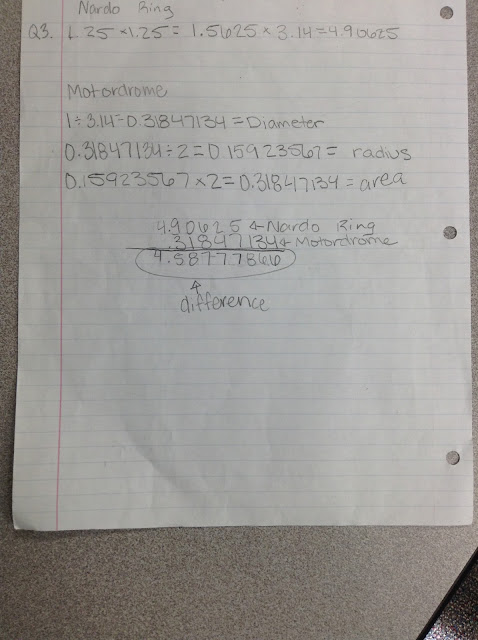When the students were watching the videos for this task, I could see a lot of smiles on faces because these were the same students who had written on the backs of these boards the year before. This was a great chance for them to reflect on how much had changed in just a year's time.
Here is the task:
Info One: 20 Whiteboards needed to be covered…
Info Two (the price has changed since we did this task): Contact Paper Specs
Question One: How many rolls did I need to cover the boards?
Question Two: How much contact paper was left over?
Question Three: Draw a real-sized rectangle that the remaining pieces could cover.
Question Four: How much did I spend on contact paper?
Question Five: If the store let me take back the extra contact paper, how much money would I get back assuming that the cost/amount received is proportional?There were a different ways students approached this task. Some of the students found the total area of the boards and fit them into the rolls. This made everything a lot cleaner and easier, but not as interesting. A few students created an actual picture showing where the white boards fit onto the paper, and then showed how the scraps were utilized. Other students figured out how many boards could fit in one roll in a numerical value, and saved the leftover in number form until there was enough square inches to trade in for another board. Students are always amazed when discussing with other students and groups how different some of these methods are while having many similarities.
While I may not be the best task creator, this task checked many of the objectives I look for (not related to content). These objectives include multiple entry points, something interesting for the student to discuss both mathematically and situationally, and a situation the students would enjoy. Not bad for one of my first attempts creating from scratch! I have included a variety of student work below to give you an idea of what I expect.
Dr. Clayton M. Edwards
Grundy Center Middle School
Middle School Mathematics Instructor
Curriculum Vita
-
National Council of Teachers of Mathematics Editorial Panel
Iowa Council of Teachers of Mathematics Regional Director AEA 267
Iowa Department of Education Statewide Mathematics Leadership Team
Journal of Educational Technology and Society Executive Peer Reviewer
-
Grundy Center Middle School
Middle School Mathematics Instructor
Curriculum Vita
-
National Council of Teachers of Mathematics Editorial Panel
Iowa Council of Teachers of Mathematics Regional Director AEA 267
Iowa Department of Education Statewide Mathematics Leadership Team
Journal of Educational Technology and Society Executive Peer Reviewer
-
Ed. D. Curriculum and Instruction (UNI)
MA Middle Level Mathematics (UNI)
Yager Exemplary Teaching Award
BlogMA Middle Level Mathematics (UNI)
Yager Exemplary Teaching Award







































































